- Home
- Tom Clancy
Special Forces: A Guided Tour of U.S. Army Special Forces Page 12
Special Forces: A Guided Tour of U.S. Army Special Forces Read online
Page 12
A Special Forces engineering sergeant (18C) places a cutting charge of C4 plastic explosive on a steel I-beam during training. Along with demolition duties, 18Cs can also construct bridges and other useful items while on missions.
JOHN D. GRESHAM
ODAs are probably the finest and most capable light infantry units in the world, and they can conduct a variety of missions across the full spectrum of warfare and conflict.
A Special Forces communications sergeant (18E) works on the networking gear for a large command post exercise, R-3. 18Es are among the most valued of military personnel for their extensive communications, encryption, and networking skills.
JOHN D. GRESHAM
There are, of course, downsides:
Downside One: There are only about 6,500 combat-ready SF soldiers to go around at any time: about the same number as half of a single light infantry division.
Downside Two: SF soldiers are expensive to train and support.
Downside Three: They are frequently the targets of recruitment by civilian businesses. Companies who are looking for exactly that mix of technical skills and mental agility so prized by the Special Forces covet men from every one of the various 18-series MOS codes.
Maintaining the organizational integrity of the Special Forces is a constant challenge.
Recruiting: The First Step
How do they build these unique warriors?
First, SF soldiers are not born. They have to be handcrafted one at a time by a time-tested process, which begins with the initial step of recruitment.
Second, finding “the best of the best” is extremely difficult ... and not just because the sort of man with the necessary qualifications is a rare bird. All too often, the quiet professionalism of the Special Forces works against them. Because the Special Forces are not very good self-advertisers, potential recruits are often unaware what Special Forces can offer them ... or what they themselves can bring to Special Forces.
The thin trickle of volunteers has left the staff of the 1st SFTG with a big job getting the word out about their community. Through a program of posters, newslet ters, and command magazines, the various Army SOF units try to educate potential candidates on the possible career paths open to them. Since the military overall already has such a wide variety of jobs and careers open to its personnel, this is tougher than it sounds. It’s not easy to persuade people to leave a branch or community after they have already invested as much as five or ten years in it.
To help make those sales, a number of Special Forces recruiting teams make the rounds of Army posts around the world.23 These serve a dual mission: to inform soldiers that the Special Forces have openings and are recruiting, and to perform preliminary screening of possible SF candidates. Like any other recruiting detail, it is hard and terribly tedious work, and now that the total pool of Army personnel has been reduced by almost half from what it was a decade ago, while the number of SF soldiers needed to man the seven Special Forces Groups has not changed, it has become almost impossible.
Still, the SFC recruiting teams manage to deliver a quality man to the 1st SFTG; the raw material for the Special Forces soldiers factory is as good as it has ever been ... and in some ways it may be even better. The move to recruit from branches other than the infantry has expanded the skill base of the entire SF community, and this has served them well in the post-Cold War world.
Once a soldier has determined that he wants to join up, he volunteers.24 Assuming that he has met the necessary criteria and has completed his Jump School qualification, he can go into the queue for the next open spot in the Special Forces Assessment and Selection (SFAS) course.
Into the Fire: Special Forces Assessment and Selection
At a minimum, a successful training evolution for a single SF soldier takes a full year, and costs a minimum of $100,000. It makes sense, therefore, to arrange for attrition to take place within the pool of potential recruits early in the training process, so as to minimize costs. This attrition is accomplished by means of the Special Forces Assessment and Selection (SFAS) course.
Seven times a year, Company “G” of the 1st Battalion, 1st SFTG gathers SF candidates for SFAS at the Colonel Nick Rowe Special Forces Training Facility at Camp MacKall, North Carolina.25 Located in the sand hills west of Fort Bragg, Camp MacKall is a satellite facility adjacent to a number of range facilities used to train personnel from every part of the Army SOF community. Here every SF soldier’s career is born. At this humble location in the North Carolina pines, up to three hundred candidates (officers, warrant officers, and sergeants all together) are run through SFAS to determine their suitability to continue to the Special Forces Qualification Course (SFQC)—the “Q” Course.
SFAS is twenty-four days of hell on earth; and it is probably the single biggest hurdle between a soldier and the Green Beret he will be awarded if he makes it to the end of the “Q” Course. Survivors of the SFAS test get an invitation to the SFQC. The alternatives are to return to their original Army service branch, or to try the SFAS again. Return to the original branch is not exactly an attractive choice, since it frequently leads to an early exit from the Army.26 But who in his right mind wants to go through the SFAS again?
SFAS is designed to provide a raw test of body, mind, and soul that will allow the 1st SWTG staff to confidently send candidates forward, sure that they will be worth the money and effort that will be expended upon them during the “Q” Course. During those miserable twenty-four days, the candidates will suffer sleep deprivation, limited rations, and physical exertions bordering on the inhuman. At the same time, they will be required to demonstrate fieldcraft skills, mental toughness, and most of all, the refusal to give up. SFAS is not at all a builder or measure of qualities like intelligence, resourcefulness, or agility. It’s a straight-up, in-your-face test of an individual’s basic suitability for the Special Forces.
Attrition is heavy. In one recent SFAS class, 7-99 (the final SFAS class of Fiscal Year 1999), 236 students started, and 78 successfully finished—an attrition rate of 67 percent. With dropout rates like this, it’s easy to understand the line from “The Ballad of the Green Berets”: “One hundred men will test today; but only three win the Green Beret!” By the time the entire recruitment, selection, and qualification process is done, three percent may actually be an overestimate.
SFAS begins with up to three hundred candidates reporting to Camp MacKall. If they have been clever, they will have taken the advice of their SF recruiter to get into a regular physical fitness regime before they come. For most, this involves lots of distance walking with heavy loads in a rucksack. But swimming skills are even more important, since the ability to stay afloat and move in water is a requirement for all SF personnel, and the swim test often ends prospective Special Forces careers. By the way, wood chopping is an excellent preparation for the swim test, an SFAS instructor explained to me, since it builds upper body muscles.
Another problem for SFAS candidates is that the course is never the same. In order to prevent potential SF soldiers from “figuring out” the course and outsmarting the instructors, events and goals are constantly changed from class to class. For example, though distance marches with loaded packs are a staple item in SFAS life, the actual distances vary,27 and many times the students are not told how far they will go on a particular march, only that they will carry a weighted rucksack (the weight varies, but usually is over 50 lb./22.67 kg.) until the instructors tell them to stop. These marches are run in all sorts of conditions, from the humid heat of summer to the ice storms of winter.
Along with their other skills, all Special Forces soldiers are fully jump qualified prior to attending their qualification course. These soldiers are practicing parachute and water infiltration skills, which are organic to each Special Forces Group.
OFFICIAL U.S. AAMY PHOTO
To make life even more interesting, the students gradually have their sleep patterns and sleep periods altered, so that they are rapidly sleep deprived.
Meanwhile, the SFAS staff packs a lot into the twenty-four days:• Obstacle Courses—SFAS has a good one. It incorporates a variety of barriers from walls and jumps to climbing ropes and underground sewer pipes. This course not only provides the SFAS cadre with a means to evaluate the overall physical fitness of the candidates, it lets them note specific shortcomings, such as fear of heights, inability to climb, or claustrophobia. All of these are important to know early, as any one of them can make a soldier worthless to SFC teams in the field.
• Runs—While much of the military has taken the view that high-impact aerobic activities like running can be bad (with good reason—it’s hell on joints), the Special Forces take the view that their entire profession is “high impact,” and Special Forces soldiers simply have to deal with it. Since SFAS aims to shake and rattle an SF candidate within an inch of his life, medium distance runs are an excellent way to start the day.
• Marches—Dozens of marches with packs are conducted during the twenty-four days of the course. All are designed to wear down a candidate to the point of mental and physical exhaustion.
• Land Navigation/Fietdcraft—Along with physical and mental stamina, there is no other skill so vital to a Special Forces soldier as land navigation. While most Army units take it for granted that they will have a NAVSTAR Global Positioning System (GPS) receiver and satellite photo-based maps, SF units are expected to maneuver to pinpoint, time-on-target objectives with nothing more than a compass, protractor, and map. Just to make things interesting, they must also do it in the dark and bad weather. Remember that batteries run down and electronics break, yet the magnetic field of planet Earth has proven comfortingly reliable. Though SFAS candidates go through a whole series of exercises on the ranges around Camp MacKall, this fixation on navigational skills is continued during the “Q” Course.
• “Situation and Reaction”—These exercises take students who are already sleep deprived and on the edge of a physical collapse and test their problem-solving skills in a real-world situation. They are faced with a problem that is only a half a degree of separation from absurd. Then using simple materials supplied by the staff or by nature, they must find a way to solve it. Over the years, the SFAS staff has devised dozens of these “Situation and Reaction” situations, so that particular events are rarely repeated in a given year.For example, imagine a 5,000-lb./2,267-kg. M151 jeep with a wheel missing. Now consider how a group of ten SFAS candidates might use only poles and ropes to move the crippled vehicle, along with a load of water cans, a mile or two.
One of the more creative solutions involves removing a wheel, leaving only two on opposing comers, and then running poles across the hood and rear bed and tying them down with ropes. Next, the water cans and everybody’s packs are loaded onto the jeep, along with a (preferably light) soldier to steer. Two other soldiers balance the vehicle with the poles, while the other seven push. This really works!
• Team Events—Though SFAS is a highly personal event for an individual soldier, a few team-oriented events allow the cadre to evaluate a candidate’s ability to work with others. These are normally variations on “Situation and Reaction”-type events, and have similar goals.For example, consider a wooden box with rope handles, about 3-ft./1-m. long, weighing about 60 lb./27.2 kg. loaded, and containing 5.56mm rifle ammunition. Such boxes are generally considered miserable to move more than a few hundred yards/meters (after that, the rope handles start cutting into the carrier’s hands). Now, imagine a twelve-man squad of SFAS students toting their weighted field packs having to move four or five of these containers several miles.
To begin with, putting a pair of SFAS candidates on each will not do (because of the rope handles problem). And there is the further problem that the weight of the boxes is sufficient to require that now and again the carriers will have to be relieved. Clearly, the job will take a concerted team effort.
I saw a number of solutions: One was to build a rope and pole platform that could be rested on the packs of six marching candidates. They would then trade off every few hundred yards/meters. Another team had a volleyball-style rotation, with eight or ten candidates carrying, while the other two walked behind and “rested.”
Special Forces applicants endure the agonies of the ammo box carry during a Special Forces Assessment and Selection course. Survival of this endurance contest is needed to move on to the Special Forces Qualification Course.
JOHN D. GRESHAM
Special Forces candidates carry a log in a “Situation and Reaction” exercise. Such exercises are used during Special Forces Assessment and Selection courses to help identify those with the aptitude and physical qualities necessary for life in the teams.
JOHN D. GRESHAM
Since SFAS events are designed to eliminate SF candidates who do not have the “right stuff” to move on to the “Q” Course, the whole thing must be, in all honesty, brutal. This is by no means a judgment on anyone’s personal or “human” qualities (Mother Teresas need not apply). You are evaluated purely on your performance.
For that reason, SFAS cadre personnel avoid sympathetic reactions or evaluations; and they do not get to know the students. The entire SFAS cadre is fully aware that in a year or two, one of these candidates could be in the field on a mission with them. Who do you want at your side when your life hangs in the balance? Much like the Navy’s famous TOPGUN school for fighter pilots, “There are no points for second place.”
The vast majority of SFAS attrition takes place during the second week, during which time the class will be trimmed to about half its starting size. Most will drop out on marches or during training events. A candidate will hit a “wall,” much like marathon runners during the twenty-first mile of a race. Something breaks inside, and he will raise a hand to call a cadre member, who quickly takes him aside to minimize the shock and shame. Though this is hardly a shameful failure (anyone with courage enough even to try SFAS is a special kind of human being, and should be admired for it), the prospect of returning home is always a tough one.
Sometimes the SFAS cadre will see someone who is simply not physically or mentally up to the challenge. They will then either counsel the candidate to drop out, or else just fail him on their own. Other times an otherwise qualified candidate suffers an injury during the course, which presents the SFAS staff with a difficult problem.
There are several ways to deal with it. If the injury is minor (say a stress fracture or a pulled muscle or tendon), then the candidate will probably be given a chance to heal and try again in the following SFAS class. Should the problem be more serious, the staff may send the candidate back to his home base to heal and (if he’s willing) get himself ready for another try the following year. If the injury is even more serious, he will have to be dropped, and advised not to return. Though these last losses are heartbreaking, the good news is that many of the injured candidates choose to try SFAS again. Such men are exactly the kind of people that the Special Forces want—men who would rather die trying than fail. These “retread” candidates have an extremely good completion rate.
By the end of the third week of SFAS, most failures and dropouts will have taken place, and the survivors are starting to think ahead to entering the “Q” Course. However, nobody should assume he will finish SFAS without going through every wicket thrown up by the cadre. For example, the land navigation portion of the course frequently causes problems even for experienced infantrymen, and can cause a “drop” just as easily as an injury. Nothing at SFAS is easy, and none of the students knows until the last day if they have made it or not.
A Special Forces Assessment and Selection candidate just after falling out of a march—deciding to drop out. While such moments are heartbreaking, they help ensure the extremely high quality of every Special Forces soldier.
JOHN D. GRESHAM
Finally, on day twenty-four, the tests come to an end, and the successful candidates will begin to look forward to what is to come. There are no fancy graduation ceremoni
es or presentations. SFAS is about survival, pure and simple. But there is a prize: an invitation to the Special Forces Qualification Course.
Unfortunately, the SF candidates don’t just finish up SFAS and head into the “Q” Course. Usually, the candidates must wait for a while between the end of one and the start of the other (and the wait can be as long as a year). This is a good time to take some leave, or possibly a military school course, and, of course, they are expected to stay in top physical condition.
Longer waiting periods have to be dealt with back at the soldier’s home base, which can be an uncomfortable time (not a few candidates will undergo some harassment from their conventional force brethren). While nobody in SFC or the rest of the Army cares to say it, the wait leaves candidates in a limbo, between their old and new lives.
The Special Forces Qualification Course
SFAS does not make a Special Forces soldier. Surviving SFAS merely shows an aptitude to become an SF soldier. Actuating that potential requires a lot more training and persistence. The “Q” Course takes a qualified and experienced soldier and turns him into a basically trained Special Forces soldier, ready to join a team in one of the SFGs and head “downrange” on missions.
The SFQC functions as a graduate-level training course, providing everyone who completes it with a common set of skills and experiences to take with them into their teams. At the same time it provides a final filtering element that allows the Special Forces community to confirm that a soldier is both ready and worthy for the responsibilities ahead.

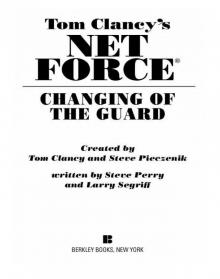 Changing of the Guard
Changing of the Guard Clear and Present Danger
Clear and Present Danger Hounds of Rome
Hounds of Rome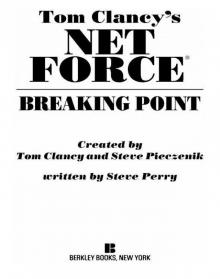 Breaking Point
Breaking Point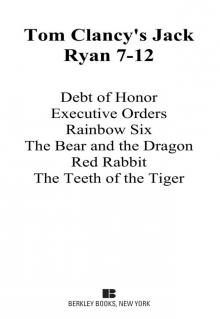 Tom Clancy's Jack Ryan Books 7-12
Tom Clancy's Jack Ryan Books 7-12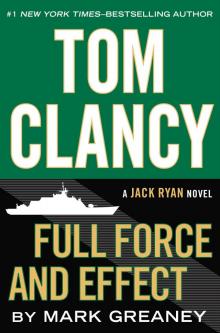 Full Force and Effect
Full Force and Effect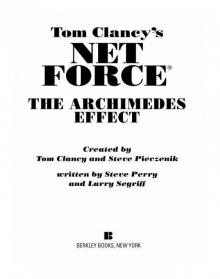 The Archimedes Effect
The Archimedes Effect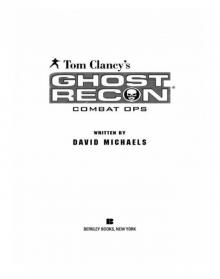 Combat Ops
Combat Ops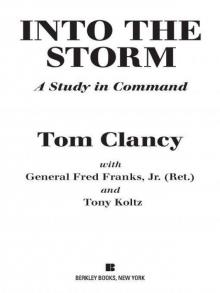 Into the Storm: On the Ground in Iraq
Into the Storm: On the Ground in Iraq Under Fire
Under Fire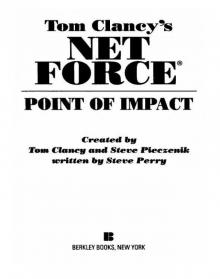 Point of Impact
Point of Impact Red Rabbit
Red Rabbit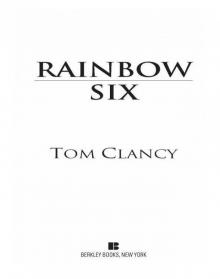 Rainbow Six
Rainbow Six The Hunt for Red October
The Hunt for Red October The Teeth of the Tiger
The Teeth of the Tiger Conviction (2009)
Conviction (2009)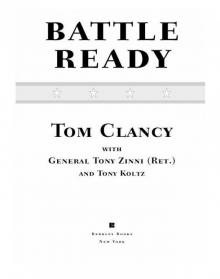 Battle Ready
Battle Ready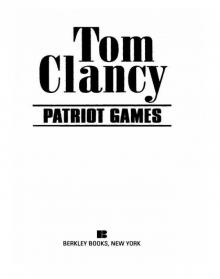 Patriot Games
Patriot Games The Sum of All Fears
The Sum of All Fears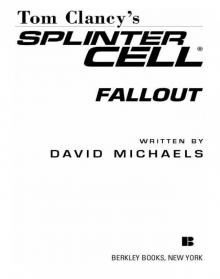 Fallout (2007)
Fallout (2007) Red Storm Rising
Red Storm Rising The Cardinal of the Kremlin
The Cardinal of the Kremlin Executive Orders
Executive Orders Lincoln, the unknown
Lincoln, the unknown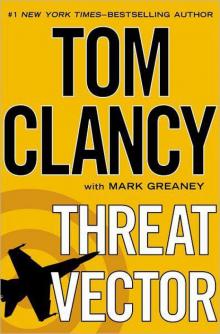 Threat Vector
Threat Vector The Hunted
The Hunted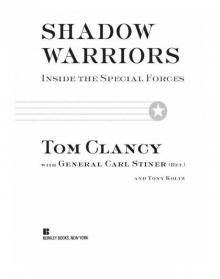 Shadow Warriors: Inside the Special Forces
Shadow Warriors: Inside the Special Forces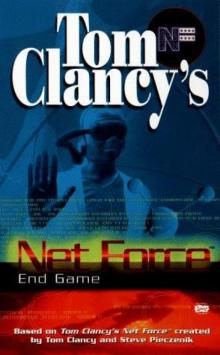 End Game
End Game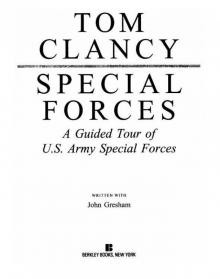 Special Forces: A Guided Tour of U.S. Army Special Forces
Special Forces: A Guided Tour of U.S. Army Special Forces Locked On
Locked On Line of Sight
Line of Sight Tom Clancy Enemy Contact - Mike Maden
Tom Clancy Enemy Contact - Mike Maden Fighter Wing: A Guided Tour of an Air Force Combat Wing
Fighter Wing: A Guided Tour of an Air Force Combat Wing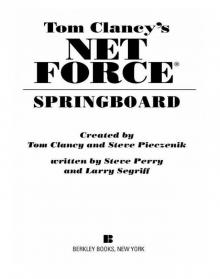 Springboard
Springboard Line of Sight - Mike Maden
Line of Sight - Mike Maden EndWar
EndWar Dead or Alive
Dead or Alive Tom Clancy Support and Defend
Tom Clancy Support and Defend Checkmate
Checkmate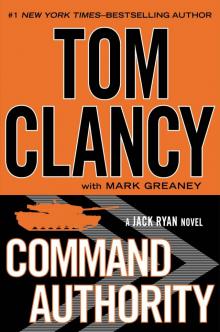 Command Authority
Command Authority Carrier: A Guided Tour of an Aircraft Carrier
Carrier: A Guided Tour of an Aircraft Carrier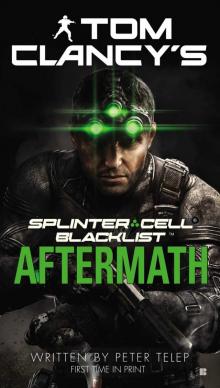 Blacklist Aftermath
Blacklist Aftermath Marine: A Guided Tour of a Marine Expeditionary Unit
Marine: A Guided Tour of a Marine Expeditionary Unit Commander-In-Chief
Commander-In-Chief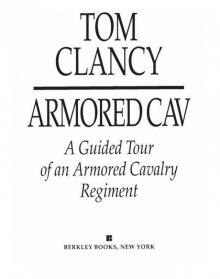 Armored Cav: A Guided Tour of an Armored Cavalry Regiment
Armored Cav: A Guided Tour of an Armored Cavalry Regiment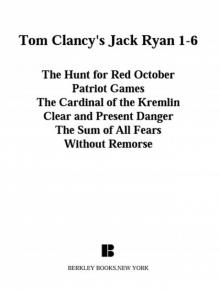 Tom Clancy's Jack Ryan Books 1-6
Tom Clancy's Jack Ryan Books 1-6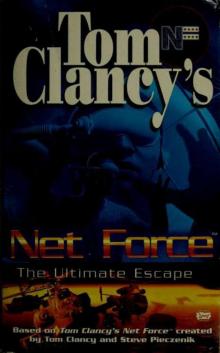 The Ultimate Escape
The Ultimate Escape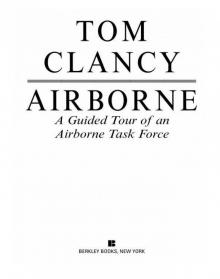 Airborne: A Guided Tour of an Airborne Task Force
Airborne: A Guided Tour of an Airborne Task Force Debt of Honor
Debt of Honor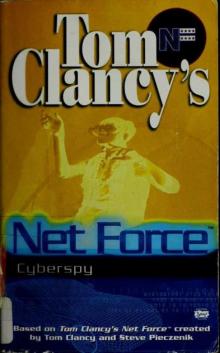 Cyberspy
Cyberspy Point of Contact
Point of Contact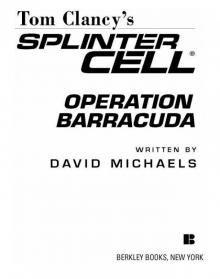 Operation Barracuda (2005)
Operation Barracuda (2005)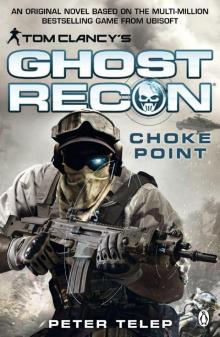 Choke Point
Choke Point Power and Empire
Power and Empire Every Man a Tiger: The Gulf War Air Campaign
Every Man a Tiger: The Gulf War Air Campaign Endgame (1998)
Endgame (1998)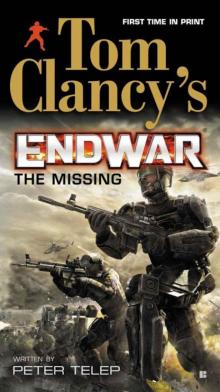 EndWar: The Missing
EndWar: The Missing Splinter Cell (2004)
Splinter Cell (2004) The Great Race
The Great Race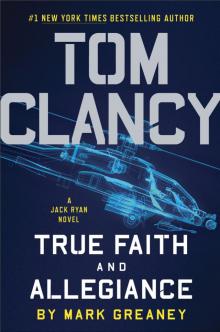 True Faith and Allegiance
True Faith and Allegiance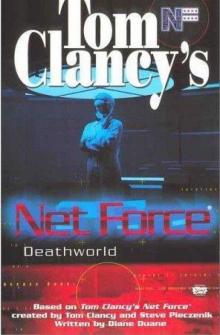 Deathworld
Deathworld Ghost Recon (2008)
Ghost Recon (2008)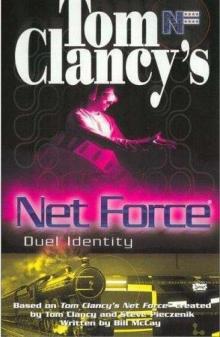 Duel Identity
Duel Identity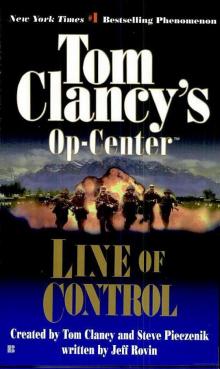 Line of Control o-8
Line of Control o-8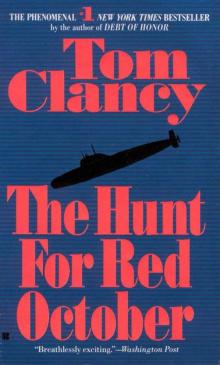 The Hunt for Red October jr-3
The Hunt for Red October jr-3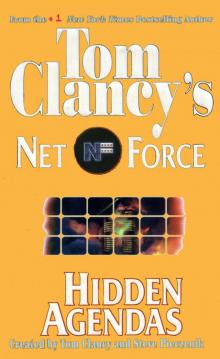 Hidden Agendas nf-2
Hidden Agendas nf-2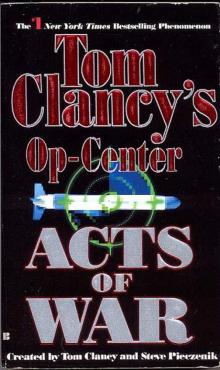 Acts of War oc-4
Acts of War oc-4 Ruthless.Com pp-2
Ruthless.Com pp-2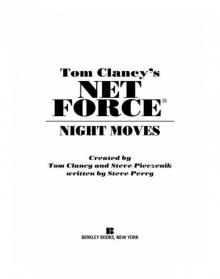 Night Moves
Night Moves The Hounds of Rome - Mystery of a Fugitive Priest
The Hounds of Rome - Mystery of a Fugitive Priest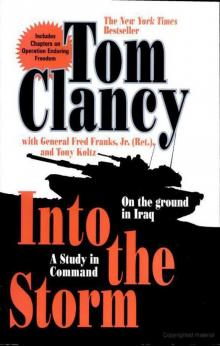 Into the Storm: On the Ground in Iraq sic-1
Into the Storm: On the Ground in Iraq sic-1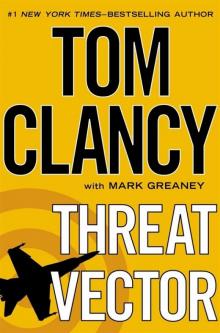 Threat Vector jrj-4
Threat Vector jrj-4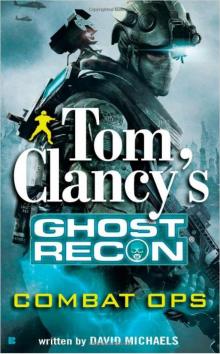 Combat Ops gr-2
Combat Ops gr-2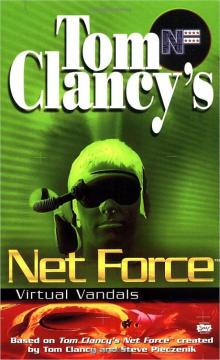 Virtual Vandals nfe-1
Virtual Vandals nfe-1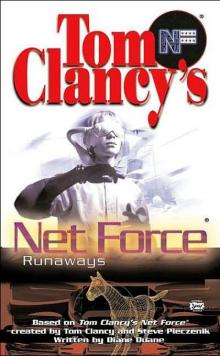 Runaways nfe-16
Runaways nfe-16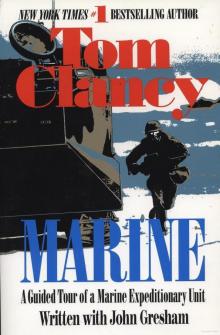 Marine: A Guided Tour of a Marine Expeditionary Unit tcml-4
Marine: A Guided Tour of a Marine Expeditionary Unit tcml-4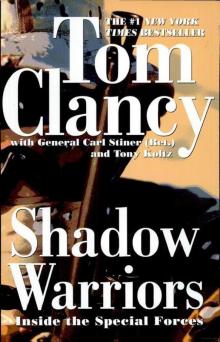 Shadow Warriors: Inside the Special Forces sic-3
Shadow Warriors: Inside the Special Forces sic-3 Jack Ryan Books 1-6
Jack Ryan Books 1-6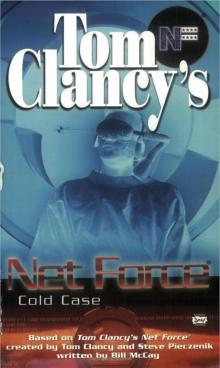 Cold Case nfe-15
Cold Case nfe-15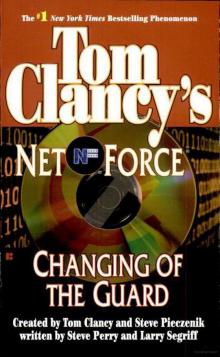 Changing of the Guard nf-8
Changing of the Guard nf-8 Splinter Cell sc-1
Splinter Cell sc-1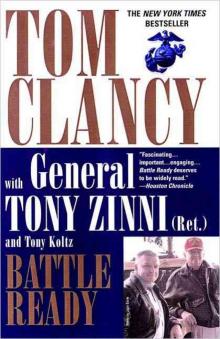 Battle Ready sic-4
Battle Ready sic-4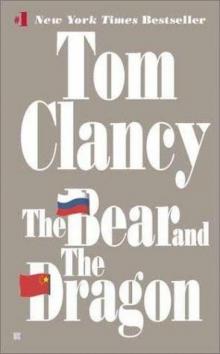 The Bear and the Dragon jrao-11
The Bear and the Dragon jrao-11 Fighter Wing: A Guided Tour of an Air Force Combat Wing tcml-3
Fighter Wing: A Guided Tour of an Air Force Combat Wing tcml-3 Patriot Games jr-1
Patriot Games jr-1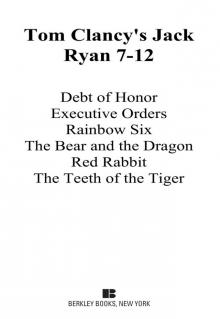 Jack Ryan Books 7-12
Jack Ryan Books 7-12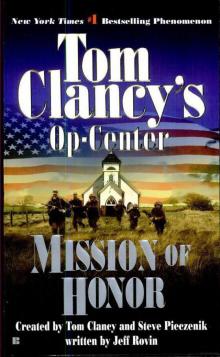 Mission of Honor o-9
Mission of Honor o-9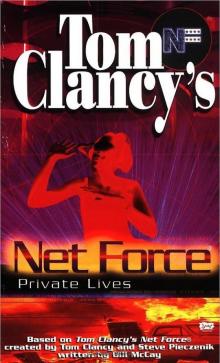 Private Lives nfe-9
Private Lives nfe-9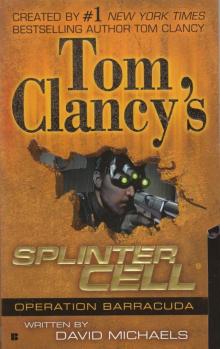 Operation Barracuda sc-2
Operation Barracuda sc-2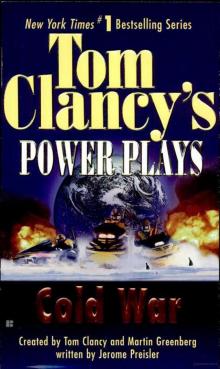 Cold War pp-5
Cold War pp-5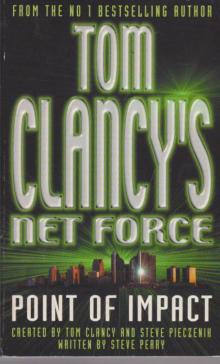 Point of Impact nf-5
Point of Impact nf-5 Red Rabbit jr-9
Red Rabbit jr-9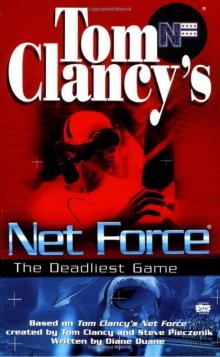 The Deadliest Game nfe-2
The Deadliest Game nfe-2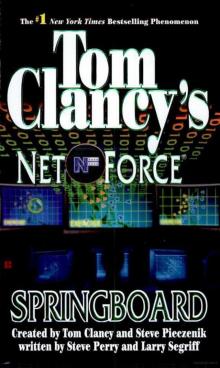 Springboard nf-9
Springboard nf-9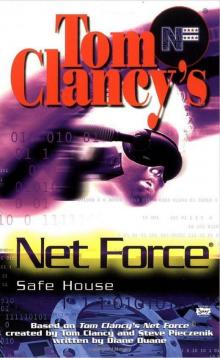 Safe House nfe-10
Safe House nfe-10 EndWar e-1
EndWar e-1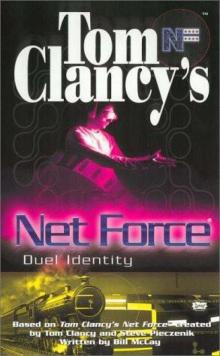 Duel Identity nfe-12
Duel Identity nfe-12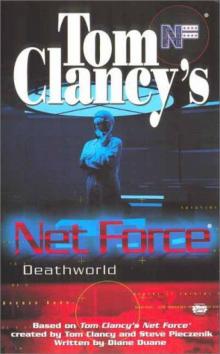 Deathworld nfe-13
Deathworld nfe-13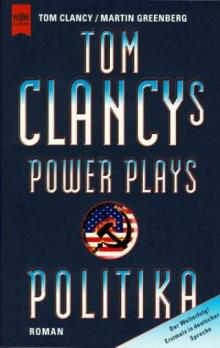 Politika pp-1
Politika pp-1 Rainbow Six jr-9
Rainbow Six jr-9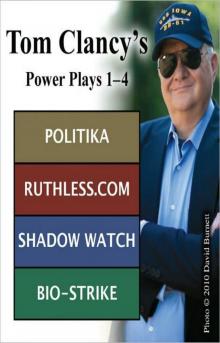 Tom Clancy's Power Plays 1 - 4
Tom Clancy's Power Plays 1 - 4 Endgame sc-6
Endgame sc-6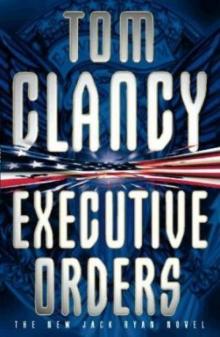 Executive Orders jr-7
Executive Orders jr-7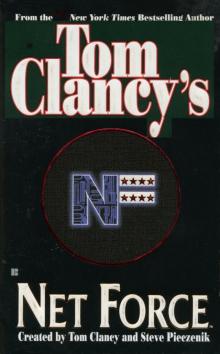 Net Force nf-1
Net Force nf-1 Call to Treason o-11
Call to Treason o-11 Locked On jrj-3
Locked On jrj-3 Against All Enemies
Against All Enemies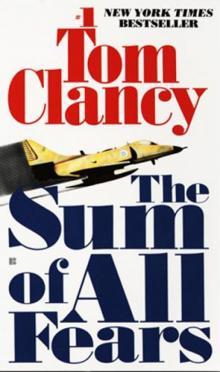 The Sum of All Fears jr-7
The Sum of All Fears jr-7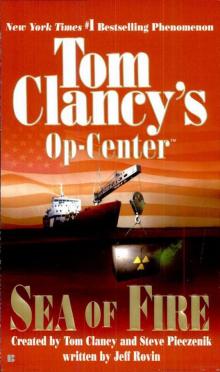 Sea of Fire o-10
Sea of Fire o-10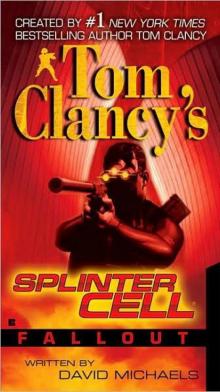 Fallout sc-4
Fallout sc-4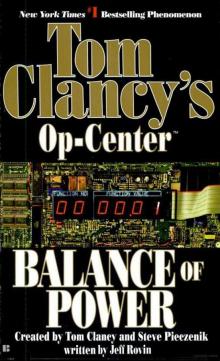 Balance of Power o-5
Balance of Power o-5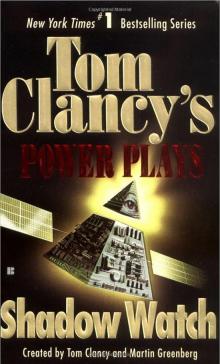 Shadow Watch pp-3
Shadow Watch pp-3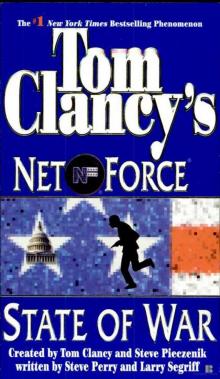 State of War nf-7
State of War nf-7 Wild Card pp-8
Wild Card pp-8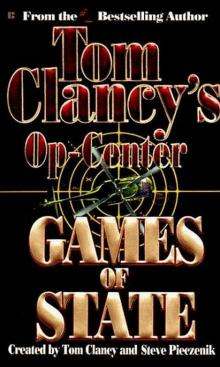 Games of State o-3
Games of State o-3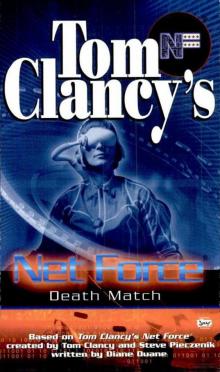 Death Match nfe-18
Death Match nfe-18 Against All Enemies mm-1
Against All Enemies mm-1 Every Man a Tiger: The Gulf War Air Campaign sic-2
Every Man a Tiger: The Gulf War Air Campaign sic-2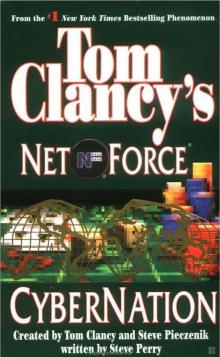 Cybernation nf-6
Cybernation nf-6 Support and Defend
Support and Defend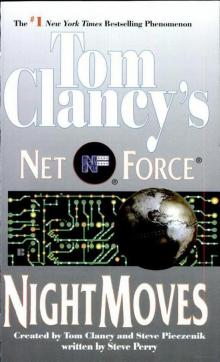 Night Moves nf-3
Night Moves nf-3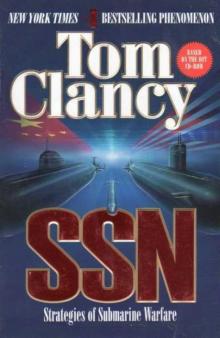 SSN
SSN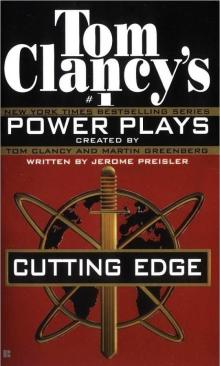 Cutting Edge pp-6
Cutting Edge pp-6 The Cardinal of the Kremlin jrao-5
The Cardinal of the Kremlin jrao-5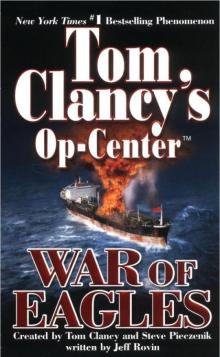 War of Eagles o-12
War of Eagles o-12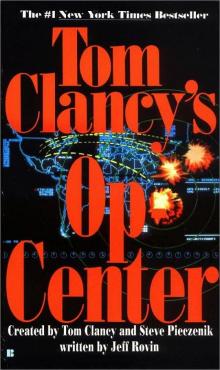 Op-Center o-1
Op-Center o-1 Mirror Image o-2
Mirror Image o-2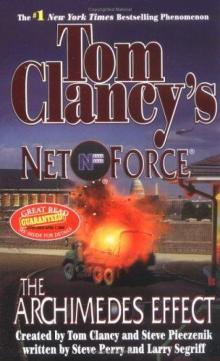 The Archimedes Effect nf-10
The Archimedes Effect nf-10 Teeth of the Tiger jrj-1
Teeth of the Tiger jrj-1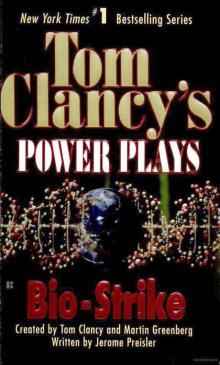 Bio-Strike pp-4
Bio-Strike pp-4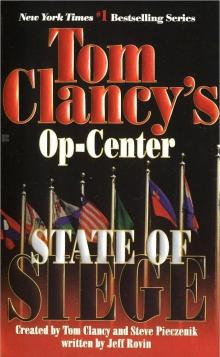 State of Siege o-6
State of Siege o-6 Debt of Honor jr-6
Debt of Honor jr-6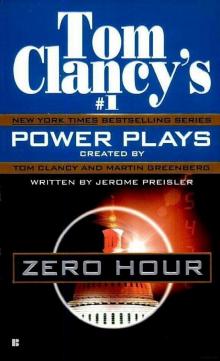 Zero Hour pp-7
Zero Hour pp-7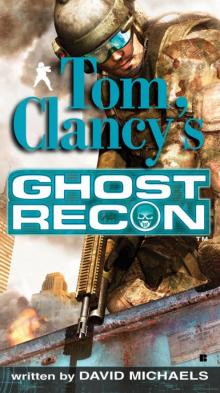 Ghost Recon gr-1
Ghost Recon gr-1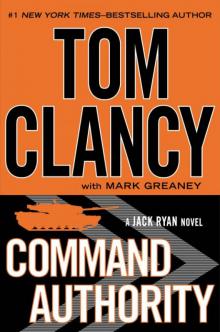 Command Authority jr-10
Command Authority jr-10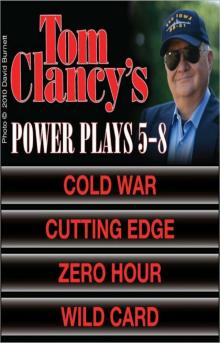 Tom Clancy's Power Plays 5 - 8
Tom Clancy's Power Plays 5 - 8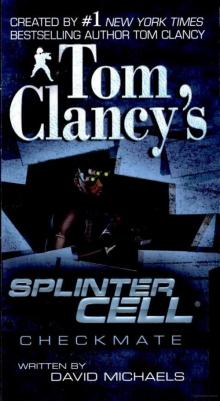 Checkmate sc-3
Checkmate sc-3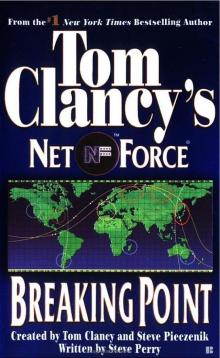 Breaking Point nf-4
Breaking Point nf-4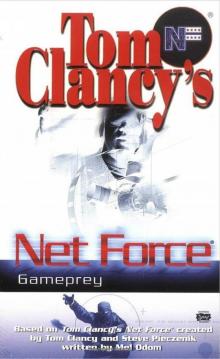 Gameprey nfe-11
Gameprey nfe-11 The Hunted e-2
The Hunted e-2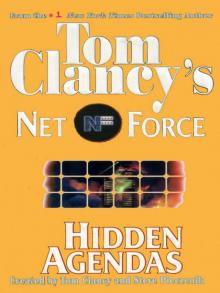 Hidden Agendas
Hidden Agendas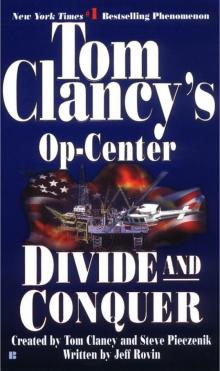 Divide and Conquer o-7
Divide and Conquer o-7